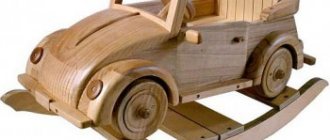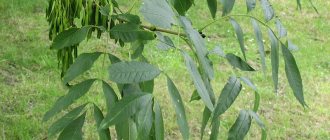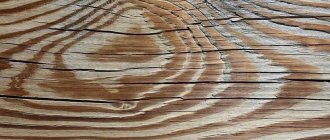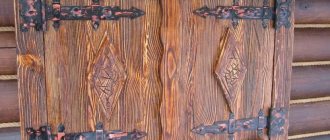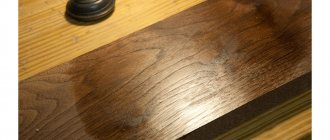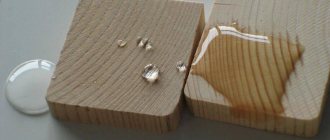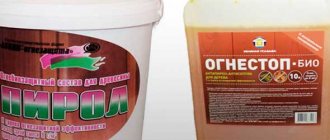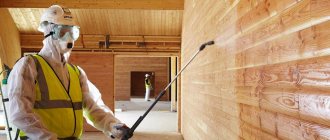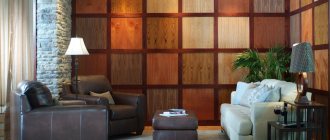If you are an environmentalist, care about your health and prefer to use wood as a building material, then in any case you will come across the concept of protecting it. After all, wood is a living material that is prone to rot, get sick and collapse without constant replenishment of moisture and nutrients from the bowels of the earth.
A modern antiseptic for wood and its varieties will help you with this, and we will now tell you which one and for what purposes is more suitable.
Protection classification
With the development of the chemical industry, the old-fashioned methods of processing timber with tar, vitriol and other improvised means have become a thing of the past. Modern ready-made solutions differ in composition, functionality, purpose, and method of use.
By purpose
Depending on the purpose of use, the means are distinguished:
- preventive;
- medicinal.
To prevent diseases and rotting, before carrying out construction work, a clean wooden surface is impregnated 1 or 2 times with a preventive solution with complete drying in between. A therapeutic antiseptic can also be used as a preventive treatment.
Old wood and new wood that has not been treated in a timely manner with signs of deterioration (uncharacteristic coloring, changes in structure) are impregnated only with medicinal agents; preventive ones are inappropriate here. Usually the treatment is carried out simultaneously with bleaching to restore the color of the material.
By method of application
For application, choose the most convenient and acceptable option depending on mobility and the nature of the surface:
- brush, roller, sponge;
- spraying;
- by immersion.
One of the methods of applying the solution is spraying Source satom.ru
Application area
According to the scope of application, we can distinguish solutions for interior and facade work, as well as solutions only for exterior work. For structures exposed to moisture, targeted antiseptics are selected, while in a dry environment the choice is wider.
Depending on the base
Antiseptics for wood processing are produced on different bases with corresponding differences in use.
- Water.
Suitable for any type of wood, it is well absorbed by the surface and dries quickly. Contains sodium fluorides, boric acid. Not 100% protection. The treated surfaces are subsequently either protected from waterlogging or coated with paints.
- Oily.
Prevents moisture from penetrating into the wood structure and colors it dark. The ingredients in shale, coal or anthracite oil have a strong, specific odor, so this impregnation is used mainly for external construction work. A natural product with linseed or hemp oil is safe; it is produced specifically for saunas and baths.
A special composition for saunas and baths does not give off any foreign odor Source yandex.net
- Organic.
They contain a mixture of liquid hydrocarbons and form a waterproof film that has good adhesion to paint and varnish coatings. Organics are often used for finishing by painting and coating with decorative plaster. Organic antiseptics have proven themselves well in the treatment of timber and logs for load-bearing walls.
Impregnated surfaces are characterized by a gray-green tint and a slight increase in the porosity of the top layer. If the structure being built involves connection with metal elements, it is recommended to take into account the effect on the durability of the metal.
- Combined.
They were developed to provide a set of protective measures, which is why they are in greatest demand. They provide not only immunity to pathogenic microflora, but also reduce flammability. Universal combinations with UV protection and decorative pigments are possible.
Today in stores you can find impregnation for any purpose Source kraski-net.ru
Kinds
There are the following types of antiseptics:
- Water soluble.
- Soluble in light solvents of organic origin.
- The same applies to heavy petroleum products and oils.
And also, according to their properties, antiseptics can be:
- Easily washable.
- Washable.
- Difficult to wash out.
- Unwashable.
On this topic ▼
Fire retardant varnishes
Description and application for coatings
Types of antiseptics can also be classified according to wood processing methods, which differ little from fire-retardant impregnation methods:
- Deep impregnation in autoclave industrial equipment, in baths with hot/cold antiseptic solutions.
- Surface impregnation by spraying antiseptic solutions under pressure using construction spray guns and painting stations.
- Surface single or multiple application with brushes, rollers with drying of the protected surfaces between stages of sequential processing.
The most reliable and effective treatment of wooden materials, which subsequently allows for long-term operation, is achieved with deep impregnation with antiseptics, when the active components of the composition penetrate into the solid wood.
Criterias of choice
Selecting a specific antiseptic for timber or boards is not difficult if you know what result is needed. You can choose protection from a specific factor or a complex remedy. It makes no sense to overpay for a super composition that will cure all problems at once if you are going to cover the house with bricks.
For actively used surfaces, such as floors, wear-resistant impregnations are needed. A gazebo in the garden can be coated with a radical covering agent, without regard to the nature of the composition, but for lathing in a sauna, the absence of odors and fumes at elevated temperatures is important.
The impregnation composition for the fence should protect it from precipitation, sun, wind Source stroi-zona.ru
Origin
The market offers imported and domestic products. Their quality does not differ as significantly as is commonly believed. However, the difference in price can be noticeable. We can only say with complete confidence that companies that have been supplying paint and varnish products for many decades have a good reason for occupying their niche in the market so firmly. Their technologies have been proven, and the product has been tested by consumers. In addition, they regularly update their product range in accordance with customer priorities and advances in the chemical industry.
It’s easy to understand the variety of products when the purpose of processing is determined. Source yandex.net
Validity
Each tree septic tank fulfills its purpose effectively within a certain period of time; after completion, the treatment must be repeated. Sunscreens have the shortest service life (3-5 years); some fire retardants have up to 35 years. The promise of longer protection should be questioned. In any case, you should read the instructions and operating conditions of the product.
See also: Catalog of companies that specialize in paints and varnishes and related work
Consumption
Space consumption is not standard. It may depend on the thickness of the liquid. You also need to take into account the number of layers of application, the type and texture of the wood. Pine, birch, and beech easily absorb solutions. Spruce, Siberian larch and fir are difficult to soak. Other breeds are considered moderately absorbent. For coniferous species, a slightly smaller volume is required due to the resin content.
Each manufacturer declares a certain number of grams per square meter. Sometimes it is more profitable to buy a more expensive antiseptic, the consumption of which is much less and the absorption is better.
When we are talking about significant amounts of work, it is possible to miss the calculations significantly. For typical liquid compositions, the average consumption for single-layer application is:
- water-based - 200-500 g/m² for sawn wood and 200-400 g/m² for planed wood;
- fire bioprotection – 250-350 g/m², lower number for fire protection class 1, upper number for class 2;
- on an organic basis - 100-130 g/m² for sawn wood, 55-70 g/m² for planed wood.
For a small amount of work, calculating the mass of impregnation is not difficult. Source kraski-net.ru
Combining functions
Disinfection with antiseptic treatment is often not enough; the antifungal effect is complemented by other functions.
- Bleaching agents give wood a more marketable appearance and remove the gray or bluish coating. Whitening additives are especially relevant in medicinal formulations.
- Fire retardants are used as a complex product for external processing of wooden structures and elements.
- UV-protective organic substances and pigments neutralize solar radiation. Ultraviolet radiation causes cracking of wood, followed by the proliferation of destructive microflora.
- Organic natural additives are suitable for interior decoration of rooms with high humidity and temperature. The most important characteristic of such ingredients is non-toxicity to humans.
- The end parts of logs and boards are especially susceptible to infection by microorganisms. Their structure is porous and absorbs moisture almost as quickly as a living tree. Favorable soil is formed for fungal spores to colonize and grow. The ends are treated with a special compound, thoroughly soaked. The consumption is much greater, since the absorption capacity of this part of the tree is much higher.
The combination of fire and bioprotection is relevant for the external walls of a wooden house Source stroi-zona.ru
When to treat
When to treat a log house with an antiseptic? Log processing is carried out in several stages. Primary treatment is always carried out before construction. It is impossible to build a house from untreated logs.
Pre-treatment ensures deep penetration of the composition into the wood structure and allows you to protect the lumber for a long time.
Often, manufacturers offer timber and logs already coated with protective impregnation. Such lumber is sold at a higher price, but by purchasing treated logs, you can skip the first stage of antiseptic treatment and immediately begin construction.
If you purchased untreated logs or lumber with natural moisture, then you need to treat the house yourself.
The following processing is carried out immediately after the construction of the log house. The work must be done with safe water-based compounds that do not interfere with air exchange and allow the wood to dry evenly during the shrinkage period.
The last time the log house is coated with antiseptic agents is after grinding, when the structure has undergone initial shrinkage. Houses made of timber can be processed approximately six months after construction, and log houses made of rounded and chopped logs should last a year and a half.
The exact processing time depends on the moisture content of the lumber; the wood should not be damp. The optimal humidity during the treatment period is 19-20%.
It is recommended to coat a wooden house with antiseptics every 5-10 years, depending on the type and quality of finishing.
The best water-based formulations
Products worthy of attention are supplied to the market by foreign and domestic manufacturers.
- The best antiseptic for interior work from the Russian company GOODHIM (gudhim) brand V250 is biologically safe and does not change the appearance of wooden products. Another plus is the ease of application. Domestic goods benefit in price relative to foreign analogues. Together with the long-term protection, the V250 takes the leading position in the rating as a result.
- Estonian PINOTEX INTERIO (Pinotex) forms a transparent, breathable film after application. The absence of odor and high drying speed make the composition a priority for indoor use.
- Antiseptic primer BELINKA IMPREGNANT (Belinka Impregnont) from Slovenia resists mold, wood-boring beetles, and reliably penetrates the top layer. The applied primer is adhesive to the finish coat.
BELINKA brand assortment Source remstroiblog.ru
Senezh Ognebio Prof
Russian product for treating large external surfaces and internal structures of technical buildings, such as warehouses, boiler rooms and garages. The composition makes the tree resistant to fire, moisture and biological parasites. It belongs to the colored antiseptics for wood and colors it in red tones of varying intensities.
The properties of biological protection are maintained for 20 years, both when applying the solution manually and when wooden materials are soaked in it.
Note!
Chipboard: what is it? Types, application features, photos, sizes, thickness, explanation, manufacturers
DIY houses made from shipping containers step by step: instructions, diagrams, pros and cons, photos, design
Working pressure in the heating system in a private house: what it should be, how to create it, instructions for adjusting it yourself
The best oil-based options
The effectiveness of treatment with an oil-based antiseptic has been proven over time; they are not washed off with water and do not give pests a chance. This type of protection is most common outdoors.
- GOODHIM facade oil with natural wax additionally contains an ultraviolet filter and is available in 15 colors.
- PINOTEX WOOD&TERRACE OIL (Pinotex wood terrace oil) is made with alkyd resin and linseed oil. Recommended as a preventative against fungal infections for outdoor work with possible coloring.
- BELINKA EXTERIER oil will protect country furniture, floors and terrace railings even made of dense wood, and has a faint citrus aroma.
- Protective oil from the German manufacturer BIOFA is transparent, but can be tinted. After coating, the surface becomes semi-gloss.
- Oil for furniture and interior items NEOMID can also be used outside, as it is resistant to moisture and sunlight. Its peculiarity is that it can be applied to old and new surfaces.
- Good bioprotection is provided by VALTTI TERRACE OIL from Tikkurila. The oil prevents damage from fungus, insects and UV radiation, and is tinted in several colors.
The TIKKURILA company pleases its consumers with a wide selection of colors Source lkmflot.ru
Top 8 best antiseptics for outdoor use
Tikkurila Eko Wood
Tikkurila Eko Wood
Tikkurila Eko Wood - reliably protects wooden structures in outdoor conditions. Using the composition of the product, it is possible to glaze. It has UV filters and water-repellent properties. Has deep penetrating ability. Impregnation is used to treat house facades, terraces, gazebos, fences, and doors. Sold in 40 colors. Produced in St. Petersburg.
The average price for 2.7 l is 835 rubles.
Luxens
The European company Leroy Merlin has launched the production of a range of Luxens antiseptics in Russia. There are transparent and colored products on sale. Used sparingly. The service life of the coating does not exceed 4 years. Simply apply with a roller or spray. Preserves the natural appearance of raw materials. Disinfects, protects from bad weather. The base is alkyd, so the pungent odor disappears quickly. The consumption is small.
Luxens – protective and decorative coating
Users note the inconvenience of brushing, as the liquid begins to splatter.
Price for 2.6 kg - 530 rub.
Pinotex Ultra
Impregnation is produced by the Estonian company AkzoNobel.
Provides good fire protection.
It can be colorless or of a certain color. It has ultraviolet filters, due to which the original appearance of the raw material is preserved for a long time. AWB technology allows the solution to be properly absorbed, increases resistance to dirt and dust, and does not leave streaks during application.
Pinotex Ultra
Impregnation is well suited to complete the finishing of products and will be an alternative to painting.
Disadvantage: it takes a long time to dry. The price is high. 2.7 liters will cost 700 rubles.
Extreme Climate
A universal water-based preparation suitable for external and internal work. Penetrates deeply into the structure, preventing the appearance of blue stains, mold, and mildew on the surface. Protects against damage by insects and sunlight. Forms a thin film on the surface, but the wood continues to breathe. There are no restrictions on species or types of lumber. Quickly absorbed. Without smell. Ensures uniform application.
Extreme Climate
Not sold in all retail chains.
The price is high, 9 l - 5200 rubles.
Dufa Wood Protect
As a result of a review of antiseptics, the German Dufa Wood Protect was recognized as the best product with dirt-repellent properties.
An acrylic-alkyd base with the addition of protective filters increases the material’s resistance to moisture, dust, and precipitation. Has no smell. Gives the surface a noble matte shade. Applies in an even layer.
Dufa Wood Protect – highly effective impregnation
It is economical in consumption: 1 liter is enough to treat up to 10 square meters. m.
To improve the quality of protection, it is recommended to apply several layers.
For 10 liters of product you will have to pay from 4000 rubles.
Nortex-Disinfector
Manufacturer - Russia.
If you need to choose a complex-action impregnation against moisture and insects, then Nortex-Disinfector will be a good purchase at an affordable price.
The service life of the protective layer is from 5 years. The color of the liquid is pink. The drug prevents cracking of raw materials. The environmental composition allows you to work with liquid without a respirator.
Nortex Disinfector
One of the important advantages is that it can be applied to damp material, but this increases the consumption of the drug. Does not change the color or structure of the wood. Protects the surface from minor damage. It is recommended to apply with a brush or spray. The specific smell disappears for a long time.
Packaged in containers from 0.9 to 43 kg. The average price for 0.9 kg is 320 rubles.
Tikkurila Valtti Expert Base
A product of the Finnish company Tikkurila with production in Russia.
Professionals believe that Valtti Expert Base is the best option for preparing a wooden surface for painting or varnishing.
Tikkurila Valtti Expert Base
Clear, odorless liquid. If necessary, dilute with water. Good penetrating ability is noted. The durability of the coating reaches 5 years. Dries quickly. It has an anti-mold effect and protects against rotting.
It is allowed to apply to products with a humidity of no more than 40%. Increases the adhesion of water-based and alkyd-based paints.
After the impregnation has dried, it is recommended to use Valtti Expert Akva.
Sold in 9 liter cans. Average price - 3000 rubles.
Pinotex Natural
Produced in Estonia. Transparent impregnation made using AWB technology. Suitable for sawn and planed wood. The service life of the coating is more than 5 years.
The composition is frost-resistant and not exposed to the external environment. It is used to treat the walls of houses, gazebos, awnings, and fences. Preserves the natural color of the breed. Easy to apply. Approximate consumption is from 8 to 12 liters per square meter. m. After drying, it forms a protective film. 1 l. costs from 500 to 680 rubles.
Pinotex Natural
The downside is an unpleasant smell that does not disappear for a long time.
Vote
Buyer's choice for facade work
The rating of wood preservatives includes the 10 best products that received the highest rating for the reliability of the external coating.
- The impregnation of the Dutch company SIKKENS CETOL FILTER 7 PLUS (Sikkens Setol Filter 7 plus) maintains its performance characteristics for almost 20 years. The UV filter slows down aging caused by sunlight. The protective dirt-resistant film prevents the development of decomposition processes and fungal damage. If the 9 ready-made colors seem unsuitable, you can always tint them at your own discretion. The only downside is the high price.
- The German product REMMERS HK-LASUR (Remmers HK-Lazur) contains additives against fungus, mold, and does not darken from ultraviolet radiation. 15 colors offer a choice for every most demanding taste.
- Estonian PINOTEX EXTREME LASUR (Pinotex Extreme Lazur) is one of the recent new products from this manufacturer. A worthy barrier to biocontamination and ordinary pollution for up to 12 years. Forms a semi-matte surface with water-repellent properties.
Antiseptic PINOTEX for basic protection Source fasad-exp.ru
The need for antiseptic treatment
Wooden surface before and after treatment
What natural factors negatively affect the health of wood:
- Water in all its forms (rain, snow, ice) and high air humidity lead to rot, mold and destruction of wood.
- UV radiation causes logs to age and crack.
- Insects and microorganisms, settling inside the tree, cause destruction of its structure.
Antiseptic treatment of wooden structures allows you to solve the following problems:
- prevents moisture from being absorbed into the wood structure, which prevents rotting;
- protects wood from bugs and fungal damage;
- protects the walls of the log house of the bathhouse and residential building from ultraviolet radiation;
- increases the service life of a wooden structure;
- improves the aesthetic characteristics of a house made of timber, a log house made of rounded logs, or a frame house.
Antiseptic treatment is required for all wooden houses without exception, regardless of the method used for further finishing: painting the walls of the house with paints or covering the facade with siding.
Video description
Watch a video with tips from Finnish company professionals on working with their products:
- Impregnation PINOTEX ULTRA (Pinotex Ultra) is based on linseed oil. Treating wood with an antiseptic slows down aging and does not allow foreign microflora to multiply. Works effectively for up to 10 years.
ULTRA means “cardinal” Source onlinetrade.ru
- PINOTEX CLASSIC is not inferior in functionality to ULTRA, but forms a thinner breathable film that is adhesive to subsequent coating with any paint. Protects the surface for up to 8 years.
Fire retardants for fire protection
When talking about wood as an excellent building material, one should not forget about its property of high flammability. For this reason, it would not be entirely correct to ignore compounds that protect wood from burning.
NEOMID 450
This composition is an effective method of protection and is intended for both indoor and outdoor use. The impregnation components, in contact with wood, produce a material that does not ignite or burn well.
Also, the impregnation is endowed with high levels of antibactericidal protection. The manufacturer guarantees seven years of fire resistance and ten years of resistance to fungal diseases. Available in both bleached and tinted versions.
A clear advantage of the composition is double surface protection. The only downside is the long drying time - about two weeks.
"Senezh Ognebio Prof"
This impregnation is also a whole complex for impregnating wood. In addition to fire protection, it creates a good barrier to the penetration of biological threats. It is also protected from water and temperature fluctuations.
An example of color change under the influence of impregnation Source allegroimg.com
It is not advisable to process parts that have direct contact with the ground. It is worth noting that when the surface is impregnated, it changes its color somewhat, but the texture does not suffer. The composition is intended for impregnation of already affected areas of the surface.
When working with impregnation, there is absolutely no odor and it can be applied using any method. One of the disadvantages is the rather high consumption during use.
Video description
The following video clearly shows how to use Pinotex products:
- German REMMERS CARBOLIN works by penetrating deeply into the fibers, forming a film that is resistant to biocontamination, light, and chemical reagents. Available in only one color – natural brown.
- The Russian product BIOTEKS (biotex) completes the rating of antiseptics for wood protection. Combines the functions of a primer and a base layer with deep penetration into the structure of the material. It can be tinted in 12 colors and works fully for up to 7 years. Repels moisture, prevents damage by fungus and mold, and contains an additive against UV radiation.
Treating log walls will prevent them from getting wet in the rain and snow Source of home-from-mikhalycha.rf
Pinotex Natural
There are a large number of good reviews from builders and woodworking specialists about Pinotex Natural antiseptic, made in Estonia. It is called the most transparent of all compositions for outdoor use. The natural beauty and color of the wood will be reliably protected for 3 years. It is applied to the surfaces of the walls of wooden structures using brushes or a spray gun. The average product consumption is 0.8-1.2 liters per square meter.
Binders make it possible to create a stable transparent film using an antiseptic. Among the disadvantages, users note slow drying.
If you want to save money
Making impregnation from available reagents is quite possible. You need to proceed from the presence of individual components and the level of their toxicity.
The basis can be:
- bitumen;
- iron or copper sulfate;
- biocidal paste;
- sodium fluoride.
The bitumen mixture preserves wood well in conditions of high humidity in the ground or damp basement, but is too dangerous for health.
The water-salt mixture is attractive due to its ease of preparation and safety, but requires the application of an additional covering layer to prevent the protection from being washed off.
Video description
The preparation of a solution from copper sulfate is shown in this video:
Bitumen based
In addition to bitumen, you will need gasoline or diesel fuel. Bitumen is heated in a metal container until a viscous consistency without lumps is obtained. Now gasoline or diesel fuel is added as a solvent. The resulting mixture is a deeply impregnated wood antiseptic, which should be used immediately after preparation. The optimal processing method is to immerse the material in the mixture.
With sodium fluoride
The solution is prepared with a concentration of 0.5-4%, depending on the place of application - indoors or outdoors. If you add a little potassium permanganate until a rich color is obtained, the work will be more fruitful. The color will fade over time, but the protection will remain.
With biocidal or sulfate paste
10-12% of the paste is stirred in 10 liters of water. The workpiece is impregnated with the composition by immersion, soaking and further drying.
Oil mixtures
The advantage of oil mixtures is their natural composition. The basis is linseed or hemp oil, to which extracts with tannins are added. In addition to moisture-repellent properties, when treated with an oil mixture, wood becomes decorative, preserving the texture of the natural material.
Oil gives wood a characteristic gloss Source enkistroy.ru
Main Applications
External protection from moisture
Do-it-yourself wood antiseptic allows you to use the solution in large volumes to achieve the desired result:
- External protection of wooden buildings from moisture and ultraviolet radiation.
- Processing of wood materials during open transportation.
- Protection of areas exposed to increased moisture (underground, buried in the ground).
- Bacteriological protection against insects, fungus and mold.
The compositions can be used as a surface coating or impregnation of the material. Combining antiseptic substances with varnishes or dyes additionally provides a decorative surface.
Important aspects of preparation and application
Basic manufacturing rules will help you figure out how to make a high-quality solution. You will need to carefully study the information about toxic components and necessary precautions. When choosing a recipe, it is important to consider the availability of components.
Initially, you will need to prepare the necessary equipment (containers, brushes, watering cans, spatulas) and select a place for making the solution. The preparation process directly depends on the base and component composition of the mixture. It is important to pay attention to the degree of toxicity of substances.
Liquid solutions should be applied using a spray bottle, thicker solutions should be applied with wide brushes or a sponge. Internal work is carried out in a ventilated area.
Operating procedure
All actions with paints and varnishes, which include antiseptics, must include personal protective equipment: gloves, work clothes and shoes, a respirator. Safety glasses are required to operate the spray gun.
Optimal working conditions:
- wood moisture content is not higher than 25%, excluding compositions working on a wet surface;
- air humidity not higher than 80%;
- air temperature +5 C or higher for organic matter;
- air temperature +10 C and higher for aqueous solutions.
The wood is cleaned of contaminants with a scraper and solvent. Apply the composition to the ends, cuts, and then cover the rest. Application of several layers requires intermediate drying. The recommended drying time and the number of layers are indicated by the manufacturer on the container.
Personal protective equipment is required during spraying Source ladysarafan.ru
Compound
Antiseptic compositions developed by specialists have their own unique formulations included in the technical specifications of production; brand/factory names, trademarks.
Among the active components in the formulation of antiseptic wood preservatives you can find the following chemical compounds and preparations:
- Copper sulfate.
- Sodium and potassium dichromates.
- Sodium pentachlorophenolate.
- Chromic anhydride.
- Sodium silicofluoride.
- Technical thiourea.
- Borax decahydrate.
- Soda ash.
- Aqueous solutions of phenol, formaldehyde.
- Transformer oil.
It should be noted that, unlike non-flammable materials, substances used for fire protection of wood, flammable materials are also used in antiseptic compositions, including flammable liquids, such as transformer oil, as well as flammable liquids - ethyl alcohol, acetal alcohol solvent.
In addition, given the danger to people and the natural environment of antiseptic chemicals containing phenol, chromium, formaldehyde, manufacturing companies are trying to abandon the use of such toxic components, giving preference to copper compounds such as copper sulfate; and also develop innovative formulations based on safe antiseptics.
Briefly about the main thing
Wood serves as a worthy building material, acceptable in a wide range of climates. To ensure its safety, it is not enough to purchase the best antiseptic for wood. Impregnation should be applied according to the manufacturer's recommendations. These instructions have been developed through experience.
The choice of impregnation takes into account the purpose and place of its use, the complexity of protective measures or a narrow focus, water, oil or organic base. This applies to purchased products and those made from chemicals at home.
Ratings of Russian and foreign manufacturers help assess the quality of their products, but often the decisive factor in choice is availability.
Ratings 0
Consumption for wood processing
Determination of the actual consumption of ready-made antiseptic solutions, including in terms of the weight of dry commercial mixtures, is carried out in laboratory experimental conditions by companies that manufacture this type of product.
The obtained results of maximum/minimum consumption are reflected in the certificate of compliance with the requirements of sanitary standards.
In cases where commercial products relate to biopyrenes - compositions that provide both disinfection of wood from mold, fungi, insects, and protection from fire, then additional tests are required to obtain a certificate of compliance with fire safety requirements.

